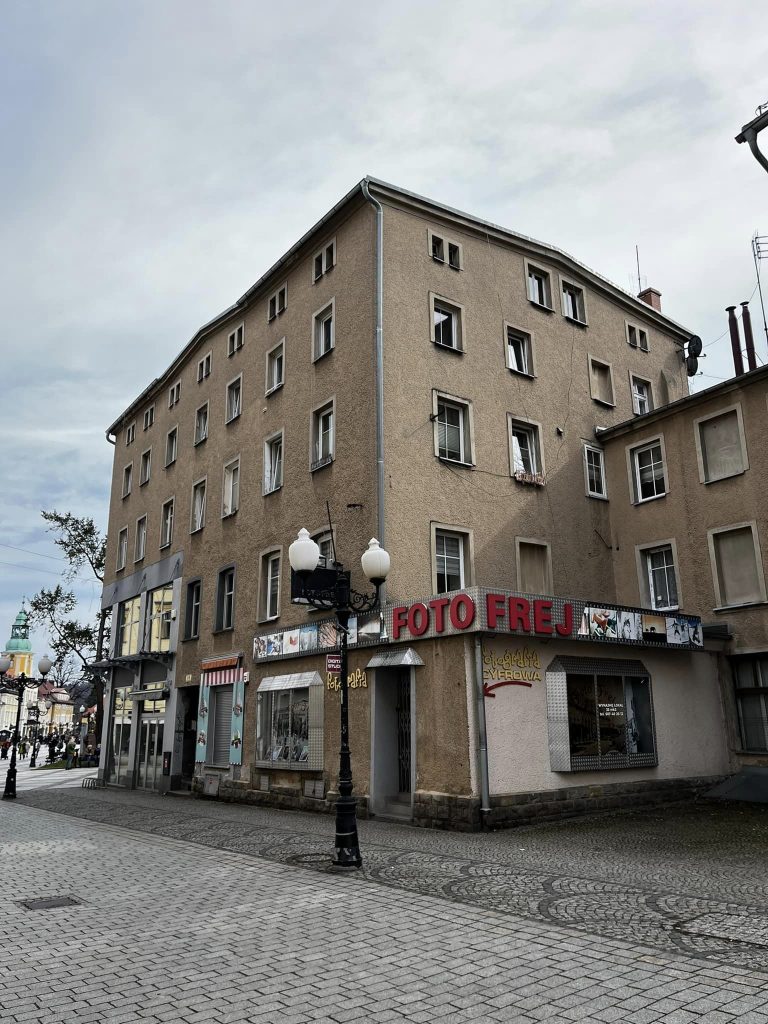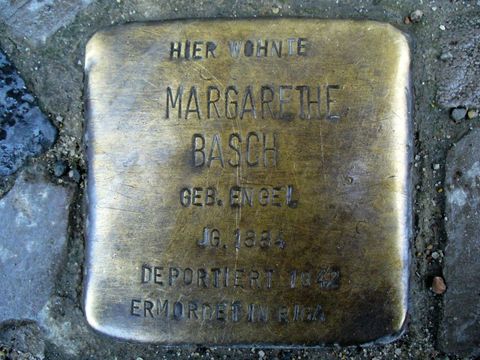
The tenement at Pl. Piastowski 31 in Cieplice Śląskie Zdrój / Photo by Marta Maćkowiak
Joseph and Johanna had 7 children: two sons, Walter and Otto (the first passed away at the age of one, and the second son would later inherit his father’s textile business), and five daughters: Gertrud, Rosalie, Elsa, Henrietta, Margarethe, and Paula.
Photos from the building at Pl. Piastowski 31 in Cieplice Śląskie-Zdrój / Photo by Marta Maćkowiak

Advertisement for Joseph Engel’s store in Warmbrunner Nachrichten from 1910

The first page of Margarethe Engel’s marriage certificate with a note regarding the adoption of the name Sara in accordance with the Nazi law – you can find more information about it in this article



The door to the building at Sybelstrasse 18 in Berlin and Stolpersteine commemorating Margarethe and Paula / Source: stolpersteine-berlin.de
Sources:
Końcowy raport składa się z kopi odnalezionych dokumentów, tłumaczeń, zdjęć oraz podsumowania. Wyjaśniam pokrewieństwo odnalezionych osób, opisuję sprawdzone źródła i kontekst historyczny. Najczęściej poszukiwania dzielone są na parę etapów i opisuję możliwości kontynuacji.
Czasem konkretny dokument może zostać nie odnaleziony z różnych przyczyn – migracji do innych wiosek/miast w dalszych pokoleniach, ochrzczenia w innej parafii, lukach w księgach, zniszczeń dokumentów w pożarach lub w czasie wojen. Cena końcowa w takiej sytuacji nie ulega zmienia, ponieważ wysiłek włożony w poszukiwania jest taki sam bez względu na rezultat.
Raporty mogą się od siebie mniej lub bardziej różnić w zależności od miejsca, z którego rodzina pochodziła (np. dokumenty z zaboru pruskiego, austriackiego i rosyjskiego różnią się od siebie formą i treścią).
Na podstawie zebranych informacji (Twoich i moich) przygotuję plan i wycenę – jeśli ją zaakceptujesz, po otrzymaniu zaliczki rozpoczynam pracę i informuję o przewidywanym czasie ukończenia usługi. Standardowe poszukiwania trwają około 1 miesiąca, a o wszelkich zmianach będę informować Cię na bieżąco.
Na Twoje zapytanie odpiszę w ciągu 3 dni roboczych i jest to etap bezpłatny. Być może zadam parę dodatkowych pytań, dopytam o cele albo od razu przedstawię propozycję kolejnych kroków.
Warto pamiętać, że im więcej szczegółów podasz, tym więcej rzeczy mogę odkryć.
Podziel się ze mną:
I najważniejsze – jeśli masz niewiele informacji, zupełnie się tym nie martw, w takich sytuacjach także znajdę rozwiązanie.